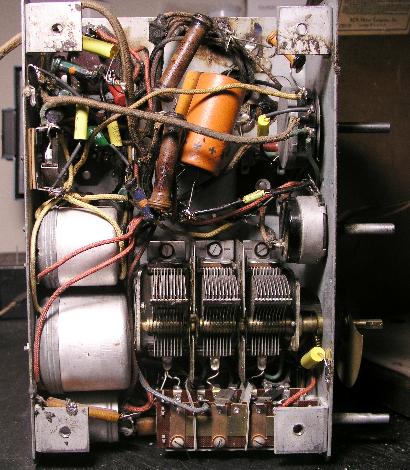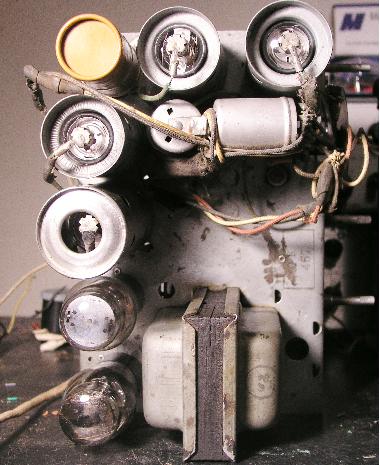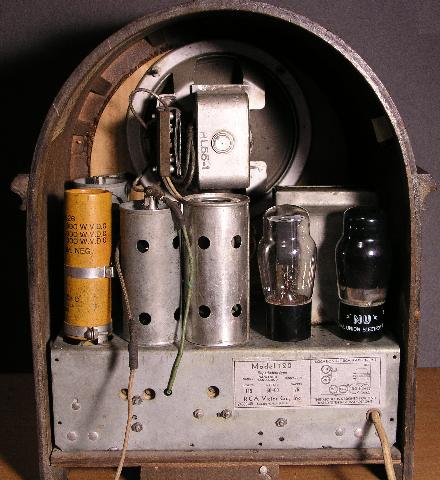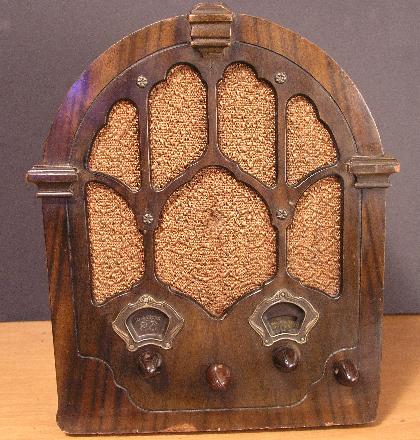
The radio played OK then, but the popping sound upon power up was still there and there was a buzz in the audio. I replaced the 2A5 audio output tube and the popping and buzz are gone. After alignment, the radio still did not play correctly - there was distortion in the audio and the sensitivity was not good and the sensitivity seemed to change from bad to good over time.
I measured all of the resistors and found that the three 60k ohm resistors measured to be 82k ohms - significantly out of tolerance. Also one 50k ohm resistor measured 68k. In addition, two 10k ohm resistors measured quite low - 4k and 3 k ohms. Other resistors measured within tolerance. I replaced all of the defective resistors and the radio plays well with good sensitivity and no distortion.
Below is a picture of the underside of the chassis after I replaced the old wax paper capacitors. Next to it is a pciture of the chassis top side.
 |
 |

I think the radio did not have the original knobs when I received it. Below is a picture of the radio with the knobs that came with the radio. Note that those knobs do not match - one is different.

I replaced the bakelite knobs with replicated walnut knobs; knobs that were typical of the 1930's era. The picture at the beginning of this page is the radio with the new knobs.